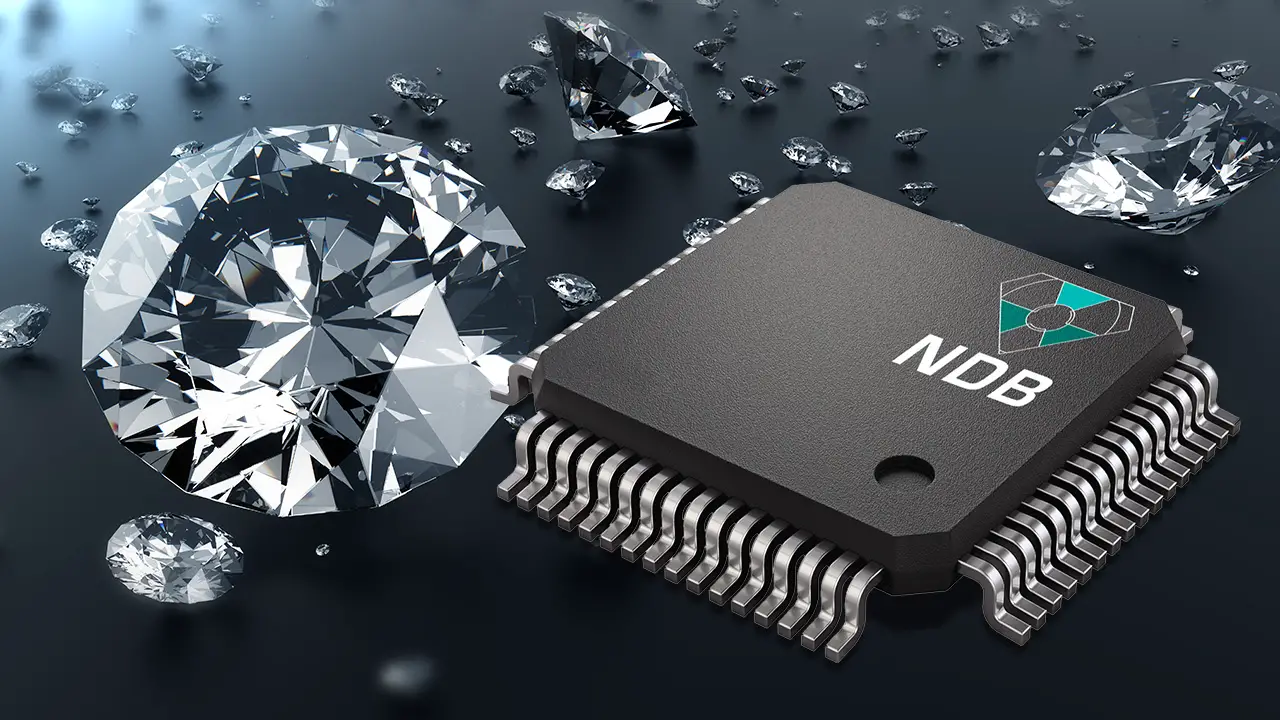Key Takeaways:
- Nano Diamond Battery (NDB) introduces a revolutionary approach, utilizing nuclear waste and tiny diamonds to create enduring power sources.
- While NDB’s batteries offer long-lasting energy, scalability remains a concern due to the need for numerous cells to power larger devices, increasing costs and complexity.
- Incorporating nuclear waste into diamond cells poses a structural risk, potentially leading to cell failure over time and raising concerns about nuclear waste management.
- Despite challenges, NDB’s technology holds promise for applications in long-term medical devices and space exploration, offering lasting power solutions.
- NDB’s forthcoming smartwatch launch in 2022 will provide valuable insights into the practicality and feasibility of their groundbreaking technology.
Visualize this: A solitary battery possessing the capacity to fuel your insulin pump or pacemaker throughout your entire lifespan (with ample excess time).
In under two years, there exists the potential to acquire a sophisticated wristwatch energized by a nuclear diamond battery, destined to surpass your existence and endure for numerous generations thereafter.
This revolutionary technology hails from the San Francisco-based enterprise, Nano Diamond Battery (NDB), extolling its eponymous “high-power diamond-based alpha, beta, and neutron voltaic battery” for its capability to furnish devices with “everlasting and eco-friendly energy.” Envision: A single battery could sustain your insulin pump or pacemaker throughout your entire lifetime (with plenty of surplus time), or supply power to a space rover, dutifully gathering Mars regolith samples for decades devoid of human intervention.
These aspirations are undeniably ambitious. So, could NDB’s audacious assertions genuinely materialize? Or are they merely a ruse?
What Constitutes a Nuclear Diamond Battery? To fabricate its Nano Diamond Battery, NDB harnesses layers of inconceivably minuscule, paneled nano diamonds (for perspective, one nanometer equates to one billionth of a meter). Diamonds boast exceptional thermal conductivity, rendering them optimal for electronic applications. Indeed, they rank as the most proficient natural heat conductors, surpassing copper or silver by three to fourfold, according to a publication by the University of Houston’s College of Engineering.
These diminutive diamonds are cultivated via chemical vapor deposition, a process in which gases at exceedingly elevated temperatures induce carbon to crystallize on a substrate material. This process, as acknowledged by NDB, engenders a cost bottleneck; the fabrication of these specialized diamonds proves energetically intensive and costly.
After all, they are “artificially boron-doped diamonds,” elucidates Yury Gogotsi, director of the A.J. Drexel Nanomaterials Institute at Drexel University in Philadelphia. (Gogotsi maintains no association with NDB.) This procedure yields diamonds imbued with a blue hue and heightened conductivity compared to conventional diamonds. Natural blue diamonds do exist on Earth, albeit scarce and even more exorbitant than synthetic blue diamonds.
Following the acquisition of nano diamonds, NDB amalgamates them with radioactive isotopes sourced from nuclear waste. Specifically, they employ radioactive isotopes of uranium and plutonium, “presumably originating from the waste of nuclear power plants,” as per Gogotsi.
Subsequently, single-crystal diamonds—measuring merely a few square millimeters in dimension—dissipate heat emanating from the radioactive decaying isotopes so rapidly that the process generates electricity. “The decay sources impart their energy onto the NDB transducer, converting the kinetic energy of the incident radiation into electrical energy,” remarks Nima Golsharifi, CEO of NDB.
Are Nuclear Diamond Batteries Excessively Remarkable? One may ponder the underlying catch. Is there truly a diamond battery utilizing nuclear waste, enduring for millennia, and featuring layers of exclusively the tiniest diamonds?
The reality is marginally more intricate. Each battery cell yields a modest amount of energy, necessitating a substantial aggregation of cells to power larger devices routinely—significantly inflating costs and complexity.
Golsharifi extols the diminutive size of Nano Diamond Battery cells as conducive to scalability. “Consider a wristwatch battery, for instance—it consumes approximately two microwatts, [thus] a much smaller NDB cell would suffice,” he elucidates. “Therefore, should we require power for a different application, the quantity of stacked cells can be augmented to satisfy the demand.”
Nevertheless, the issue of wear-and-tear persists: Researchers embed nuclear waste within diamond cells, instigating a natural structural vulnerability that, statistically speaking, will lead to failure in some cells over time, as expounded by Gogotsi. Upon the widespread availability of the Nano Diamond Battery in the future, some cells may succumb to breakage or simply become obsolete alongside the devices they power.
“This presents a dilemma of nuclear waste, an inevitability if a large number of batteries are utilized,” remarks Gogotsi. “Some will inevitably disintegrate. While this may not pose a problem in space, it will assuredly be a concern on Earth’s surface.”
What Is the Lifespan of a Nuclear Diamond Battery?
However, this does not imply that the diamond battery lacks merit. If these challenges are surmounted, potential applications include enduring devices such as hearing aids or pacemakers. “Consider a child receiving a hearing aid implant or an elderly individual with a pacemaker; individuals should not undergo potentially traumatic surgery more than once,” Golsharifi contends.
Moreover, the batteries could prove invaluable in spacecraft necessitating protracted autonomy, asserts NDB. Satellites, for instance, could benefit immensely. NDB’s assertion that the battery endures for 28,000 years derives, in part, from such low-power space applications. Voyager—NASA’s iconic space probe, launched in September 1977 to explore the outer solar system—employed three “Multi-Hundred Watt Radioisotope Thermoelectric Generators” (MHW-RTGs) for power. Each generator initially yielded a mere 158 watts, insufficient energy to power a household light fixture for a year.
Furthermore, when a sufficient quantity of these diamond battery cells is combined, they could still energize electronics on Earth with higher energy requirements, from LED displays on tablets to smartphones. For its inaugural commercial offering, however, NDB intends to introduce a smartwatch, slated for release sometime in 2022. Should this materialize, one could possess a singular timepiece with a solitary battery, perpetuating through generations sans replacement—a veritable heirloom.
Nonetheless, NDB guards its revelations closely, divulging scant details regarding the Nano Diamond Battery (such as its power density). Additionally, there are no video demonstrations of the technology yet. Nevertheless, the potential of the radioactive diamond battery remains palpable, and the forthcoming smartwatch from NDB will provide valuable insights into the viability of such technology in diverse applications. And so, we await—our only currency is time.


